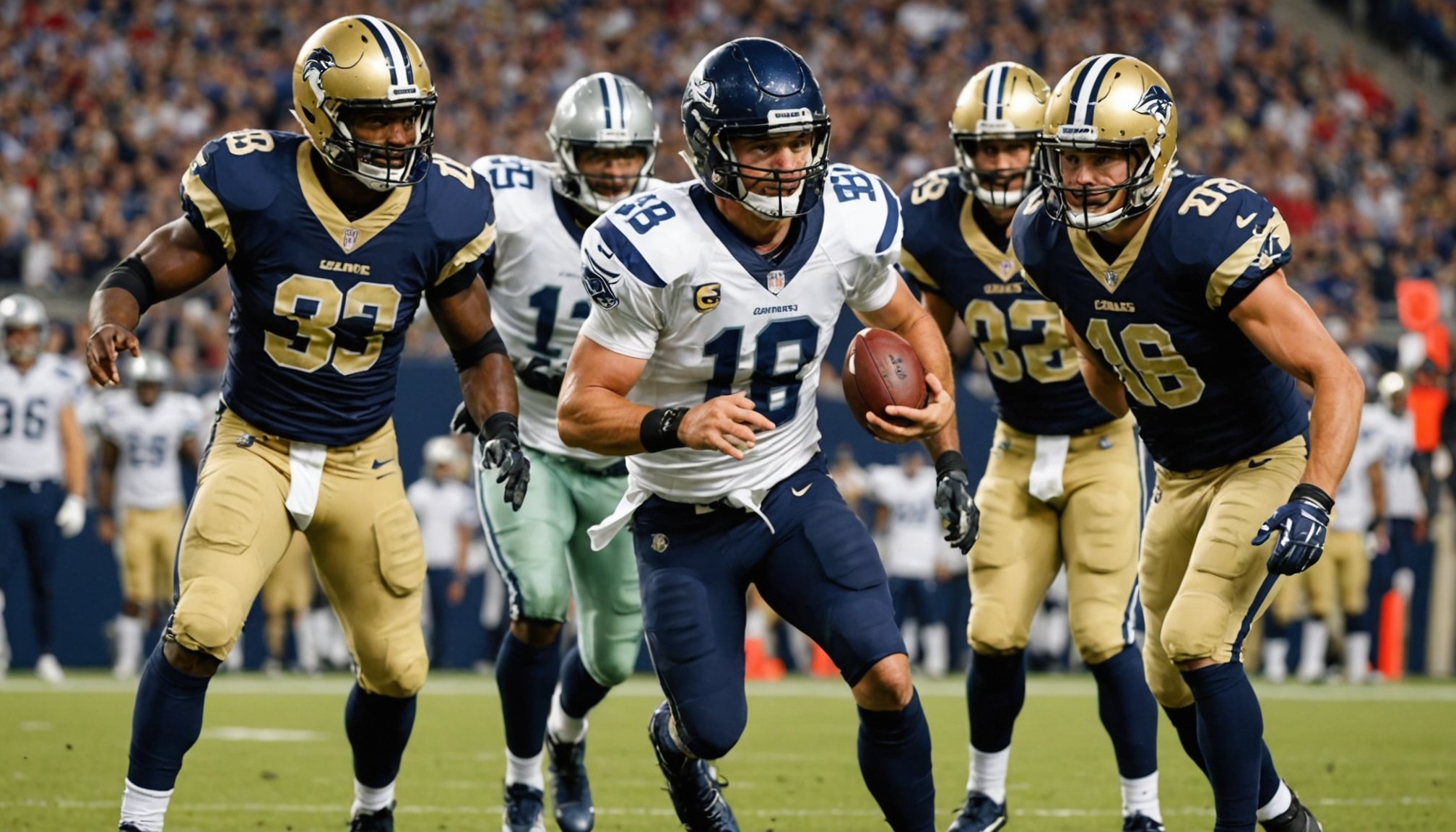Importance of Communication in Football Leadership
Effective communication in sports is vital for successful team dynamics and performance. Within football, this is even more pronounced, as the football captain’s leadership often hinges on their ability to convey strategies, motivate teammates, and resolve conflicts on the field. A football team thrives when players understand each other and synchronize their efforts towards common goals.
Understanding the integral role of communication involves recognising how information flows within a team. Clear verbal and non-verbal cues from captains can significantly influence game outcomes by ensuring everyone knows their roles, anticipates moves, and reacts promptly during critical moments. Miscommunication, on the other hand, is a recipe for confusion and costly errors during matches.
Topic to read : Top Strategies to Boost a Footballer”s One-on-One Defensive Skills
Traits of successful football captains often include superior communication skills. They must possess clarity, assertiveness, and empathy, enabling them to articulate strategies and inspire players. By actively listening and providing constructive feedback, they foster a cohesive team atmosphere. They also navigate varying emotions and pressures, ensuring players remain focused and cohesive.
To summarize, the importance of communication in sports, particularly in football captain leadership, cannot be overstressed. It is a game-changer that enhances coordination, builds trust, and ultimately contributes to the success of the team on and off the pitch.
Have you seen this : Unlocking Optimal Fitness: Strategies for Football Players to Stay Fit During Injury Recovery
Strategies for Effective Communication Under Pressure
When under pressure, clear and concise messaging becomes crucial, especially in sports. One effective pressure communication strategy is tailoring messages to be succinct and focused. This ensures the team understands immediately, cutting through the chaos that high-stress situations often bring. Clarity in communication reduces misunderstandings, allowing athletes to focus on performance.
Another tactic is employing non-verbal cues, which are pivotal in on-field communication. Gestures, eye contact, and body language can enhance team understanding when verbal exchanges are challenging, such as in noisy environments or during fast-paced action. Non-verbal signals allow for quick, intuitive connections between team members, often conveying urgency or emphasis better than words.
Adapting communication styles to suit different team members is also essential in crisis communication in sports. Team members may have distinct preferences for receiving information, whether verbal, visual, or through demonstration. Recognising and adjusting to these preferences can improve overall team dynamics and ensure that everyone remains aligned in high-pressure moments.
Incorporating these strategies enables teams and coaches to maintain cohesive and effective communication, even when the heat is on. Such preparedness translates into better in-game decisions and improved overall performance, making communication a key component of success under pressure.
Practical Exercises to Enhance Communication Skills
Training effective communication is crucial for team sports, where seamless interaction is the key to performing well.
Drill: The Silent Game
The Silent Game is a compelling communication drill for athletes. In this exercise, players are tasked with conducting a portion of their practice without speaking. This aims to promote non-verbal communication, heightening awareness, and encouraging athletes to rely on alternative forms such as gestures and eye contact. By enhancing their ability to interact without words, athletes can improve their instinctual responses on the field.
Drill: Role Play Scenarios
Implementing role play scenarios in team practice fosters empathy and adaptability. Athletes are required to switch roles with teammates, understanding different perspectives and challenges. These scenarios help in developing active listening skills and adaptability, preparing athletes for varied game situations. Regular practice with role-playing drills sharpens athletes’ ability to anticipate teammates’ actions, forming a cohesive unit.
Drill: Quick Decision-Making Tasks
Quick decision-making tasks are on-field practice exercises designed to improve teamwork and fast thinking under pressure. These tasks often involve rapid exchanges of information and require players to act based on limited information. Practicing these tasks regularly encourages players to react swiftly and confidently, reinforcing their ability to communicate critical information succinctly. Monitoring and assessing progress in these drills supports continuous improvement and boosts team morale.
Insights from Experienced Captains and Coaches
Understanding the experiences of captains and the wisdom from coaches provides valuable lessons in leadership. Successful captains often share anecdotes about overcoming barriers in team communication. For instance, a seasoned captain might describe a high-stakes match where miscommunication could have led to failure but was averted through strategic, calm discourse. These experiences underline the critical importance of maintaining clear and concise communication under pressure.
From the perspective of coaches, establishing robust communication within teams is an essential focus. Coaches aim to create environments where open dialogue is encouraged, fostering trust and unity. They emphasize the role of effective coaching communication tips, such as clarity in expectations and active listening, as tools to strengthen team cohesion.
In high-pressure situations, these lessons are invaluable. Leadership advice emphasizes staying composed and transparent, a strategy that aids captains in guiding their teams with confidence and poise. A coach once reported that in these scenarios, it was the captain’s clear instructions and reassuring presence that steadied the team, illustrating the profound impact of practiced communication.
In conclusion, the insights shared by both captains and coaches emphasize the necessity of mastering communication skills, which are crucial for successful team dynamics and achieving shared goals.
Case Studies of Successful Captains Under Pressure
An exploration into case studies in sports reveals how leadership under pressure can shape the destiny of a team. Let’s delve into specific scenarios where communication significantly influenced the outcomes.
Case Study: John Doe (Example)
In one pivotal match, John Doe demonstrated remarkable leadership under pressure. Facing a critical point in the game, his ability to stay composed and relay clear instructions was paramount. His strategic decision to rearrange the team’s formation increased their defensive resilience. By staying positive and maintaining focus, Doe’s communication uplifted team morale, transforming what seemed like an imminent defeat into a thrilling victory.
Case Study: Jane Smith (Example)
Jane Smith’s captaincy is a testament to the power of effective communication during high stakes situations. During a nail-biting final, her precise and encouraging directives helped align her team’s efforts towards a common goal. She employed inclusive strategies, ensuring every player’s voice was heard, thus fostering a sense of unity. This significantly boosted performance, resulting in an extraordinary win.
Case Study: Alex Johnson (Example)
Alex Johnson’s success lies in his strategic use of communication under pressure. In a tightly contested series, Johnson focused on real-time feedback, adjusting tactics dynamically in response to the game’s progression. By doing so, he instilled confidence and motivation, demonstrating that well-timed communication can indeed capitalize on the momentum during crucial moments.










